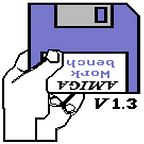WhiskerNet
I’m quoted in an article:
“I was 22 and the Internet was new and everyone was sitting around a table chatting and laughing,” Ford told me. “Who went to parties where no one knew each other?”
Which is fine for the purposes of the story—“Internet” and “Web” are now interchangeable in common speech—but also off, because the Internet was not new in 1996/1997; the Internet started in 1969. The World Wide Web, which was built on top of the Internet—and not just any Internet, but the cheaply available Internet on commodity hardware and free software—was only a few years old.
All new to me, though. New to people in their 20s. Just as New York City was also new to me. They’re all bundled together in my head, the Web and the city. I’ve been comparing one to the other for decades.
Once you see one network you see them everywhere. WhiskerNet, for example. WhiskerNet is when you visit someone’s home, or one of the more progressive offices, and their cat nuzzles your shoes. Then you go home—maybe with a train or plane, maybe by walking—and your cats also nuzzle your shoes, sensing the other, distant cat by its smell.
The remote cat, you realize, was picking up your cats when it was nuzzling your shoes. They have exchanged cat packets. Allow me to illustrate:
WhiskerNet is very slow, totally asynchronous and there is no guaranteed cat packet delivery. It is a side-effect of cats being territorial, smell-driven creatures, but also domesticated, so that when you walk in the door smelling of some other cat they realize that they must grab that information and make sense of it. Consider this from the Humane Society’s helpful page, “Cat Chat”:
When your cat gets a whiff of something really fascinating, he opens his mouth and inhales so that the scent molecules flow over the Jacobson’s organ. This intensifies the odor and provides more information about the object he’s sniffing. What he does with that information, well, we’ll never know.
This is called the Flehmen response and it is among the better-illustrated of Wikipedia pages, trust me.
In any case I just wanted to tell you about WhiskerNet because I like remembering that there is an enormous amount of information flying around me at all times and whole big crazy networks that exist that you can’t even see when you’re 22, wandering around the city feeling a little sorry for yourself while you make weird websites. Every year I discover new networks. Sometimes it’s like, “rich people,” sometimes it’s “women’s hair products.” Like, when Venture Capital people tell you how you can pitch them, all those relentless blog posts about how to ask for coffee or how to make a compelling pitch deck, they are just defining the protocols for information exchange in their network. Follow the rules and you can get your information into the network. (What they do with that information, well, we’ll never know.)
Then there’s the other level, the dogwhistles. VC blogs are basically two things: Instructions on how to ask a VC for coffee, and talking their book via dogwhistle. I guess we can talk about that later though, I’m timing out.
